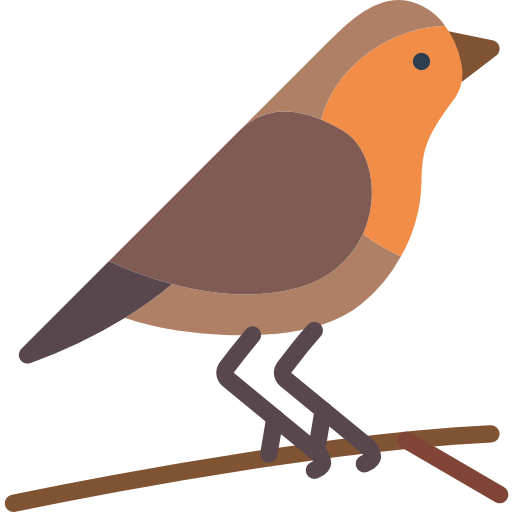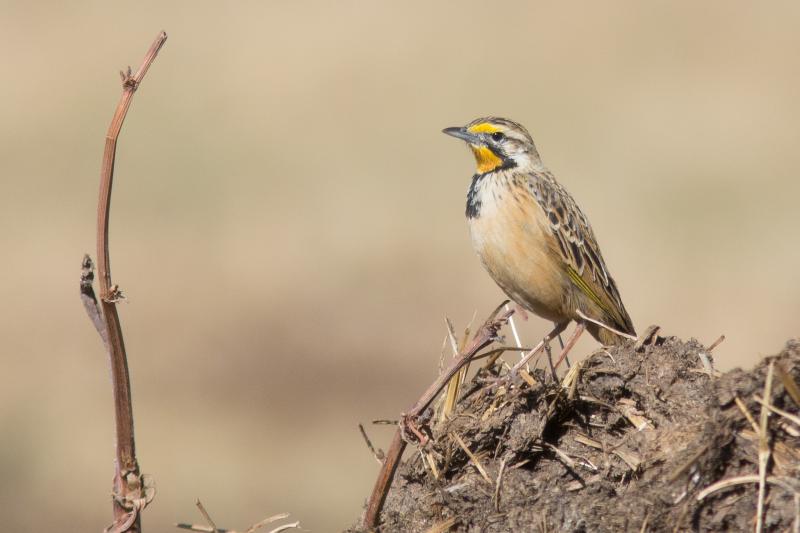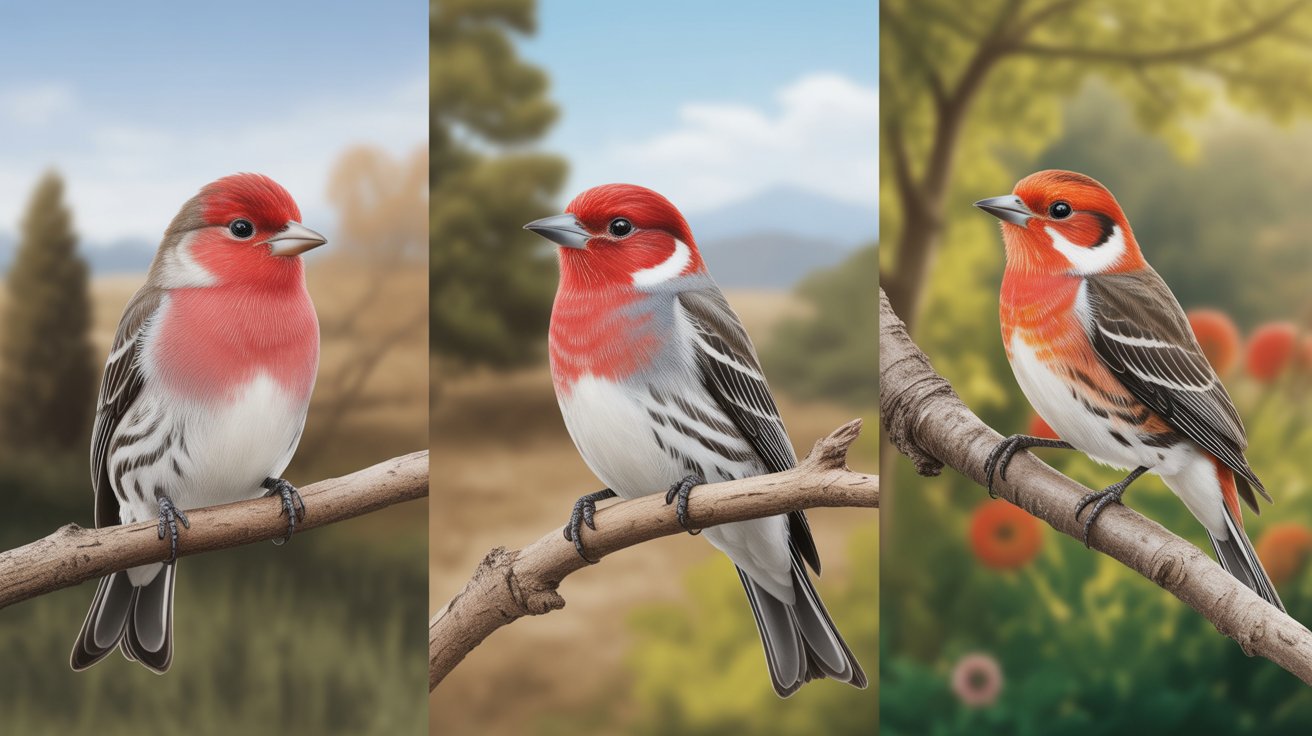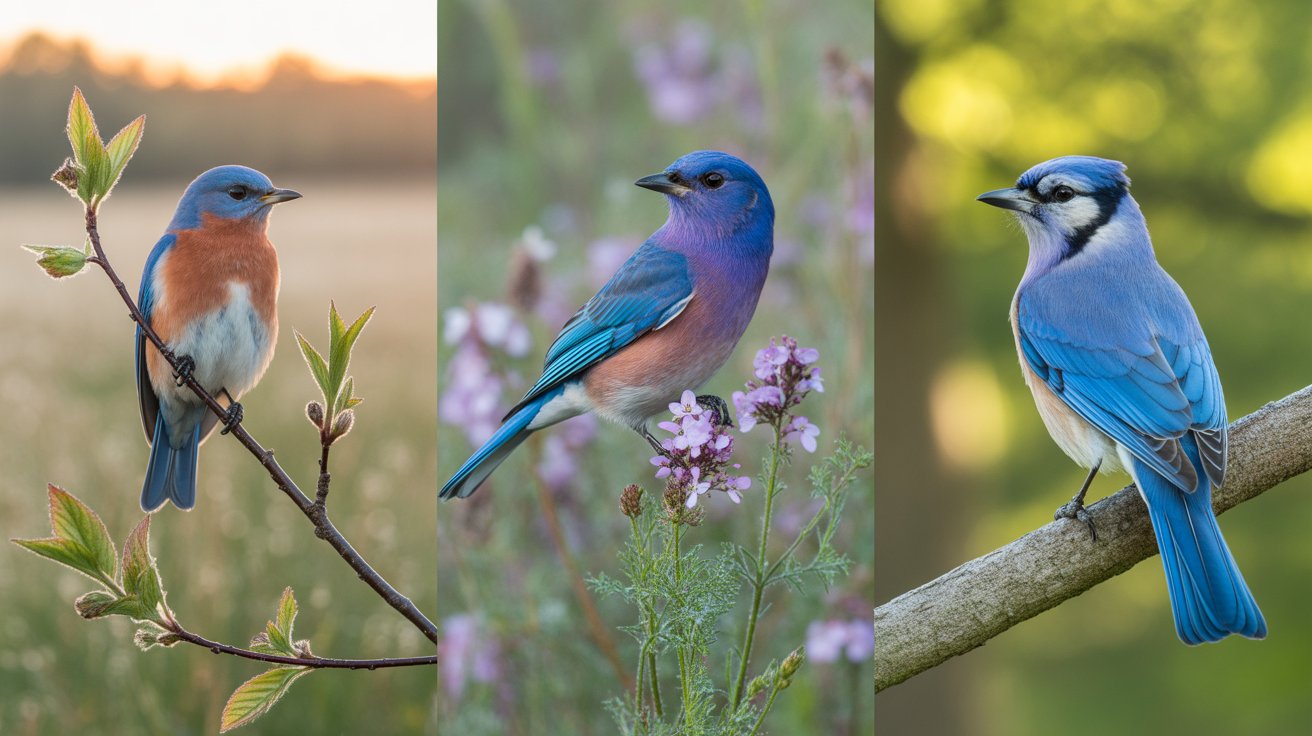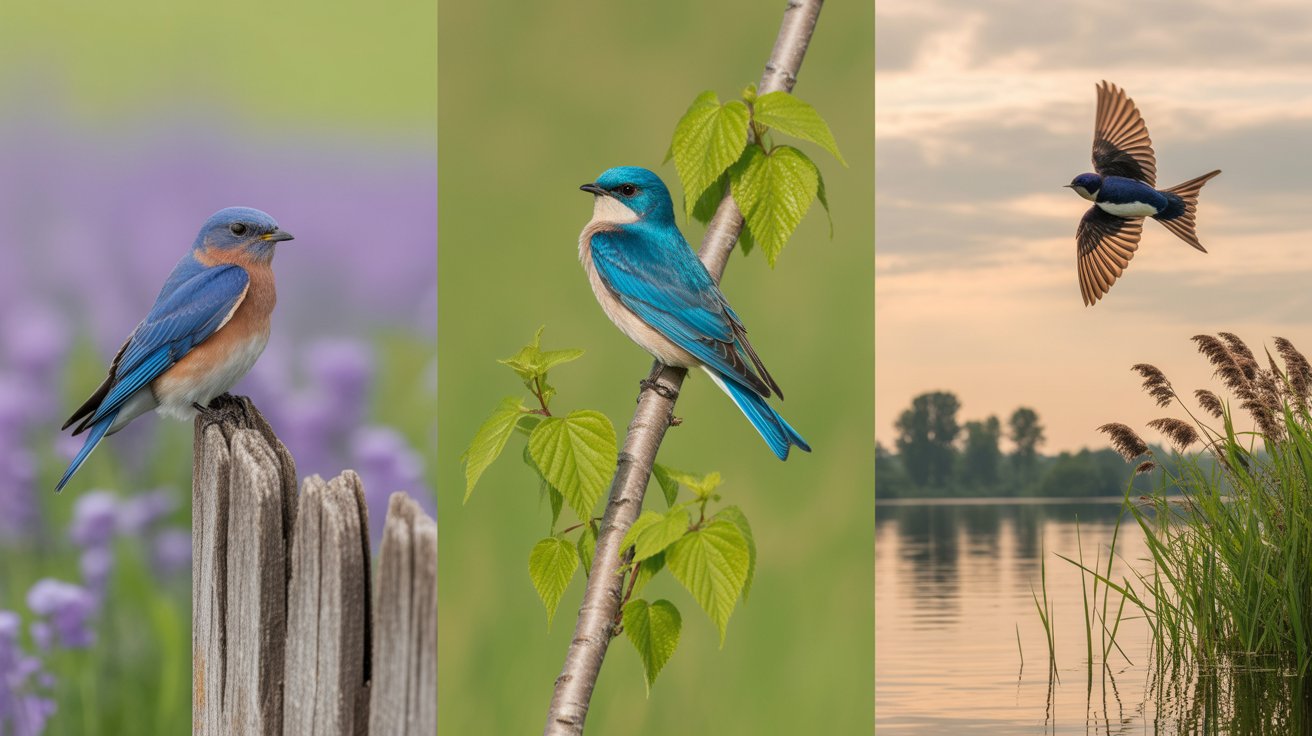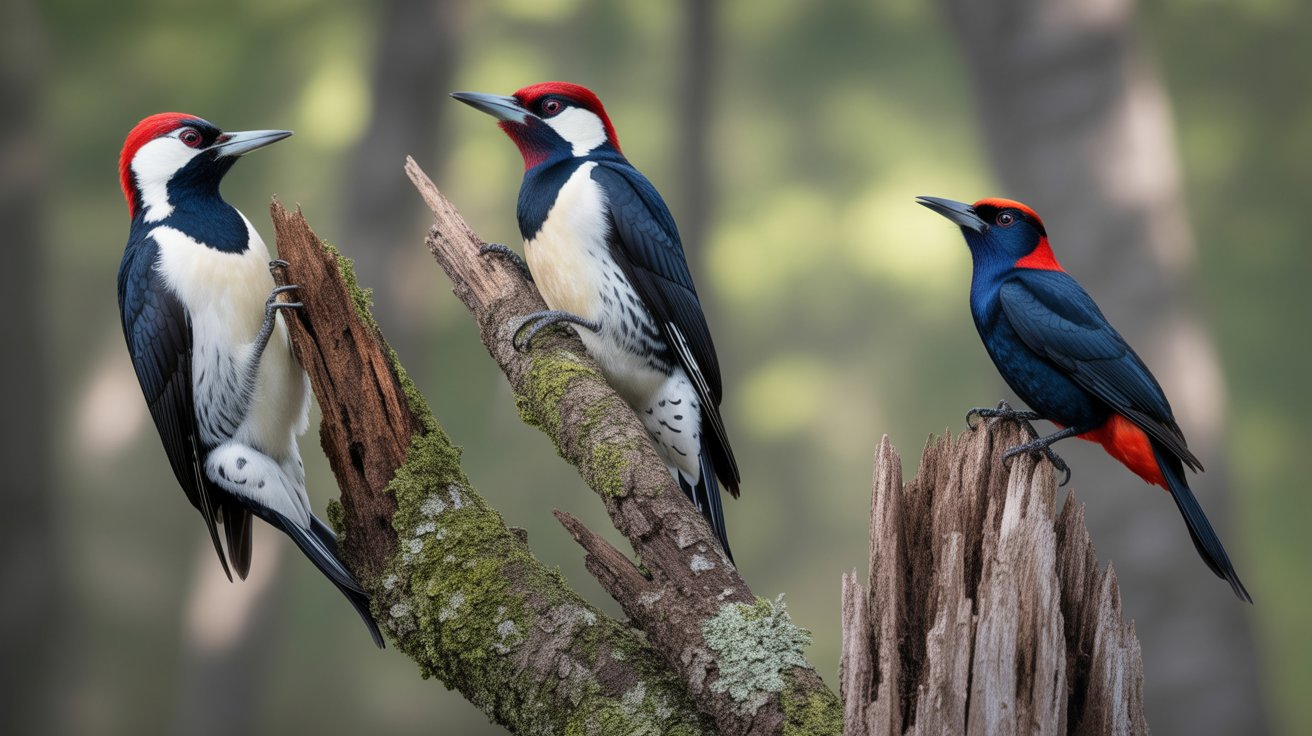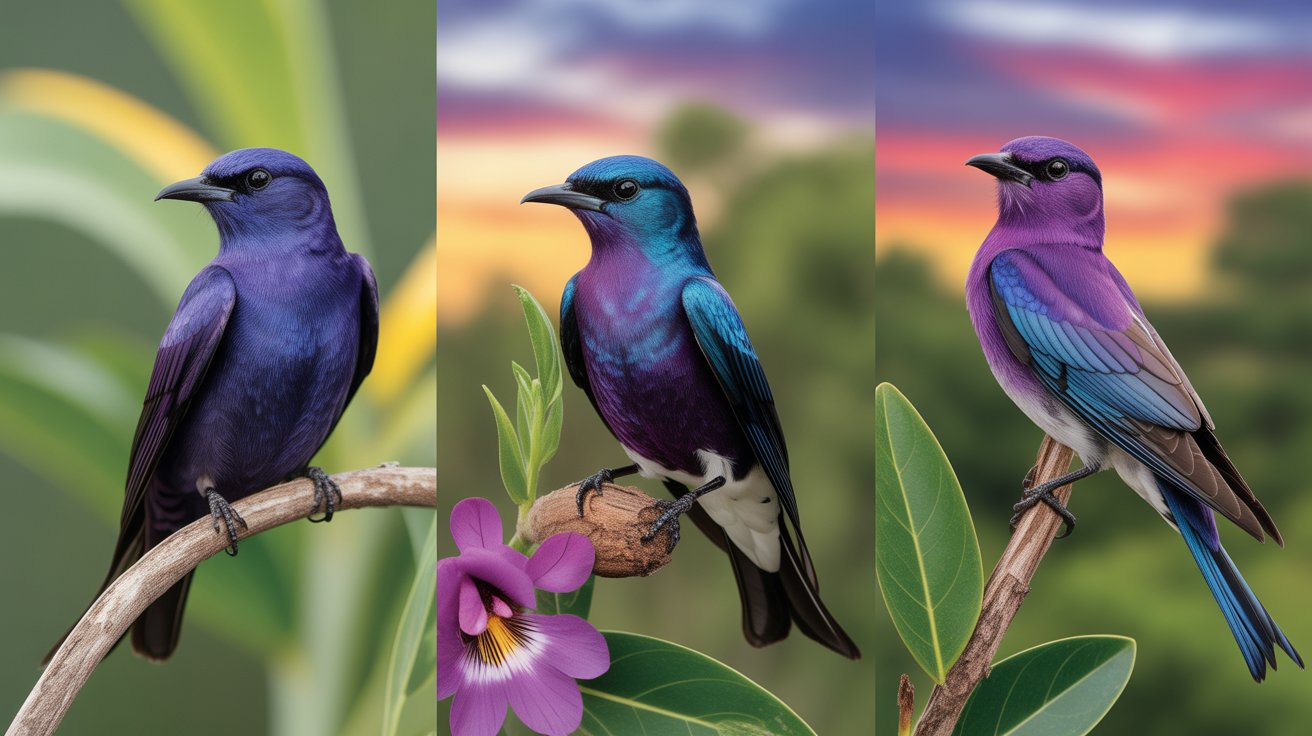When you think of Africa’s iconic birds, large raptors or colorful bee-eaters may come to mind first. But if you’re eager to expand your birdwatching horizons, you’ll want to meet the Abyssinian longclaw — a striking songbird with subtle charm and fascinating habits.
You might not spot this bird on a quick safari, but if you take the time to walk through the highland grasslands of Ethiopia, there’s a good chance you’ll see it perched proudly on a tussock, singing its soft notes. Known for its bright yellow chest and striking black gorget, the Abyssinian longclaw is often compared to meadowlarks of North America — but it has a distinct personality all its own.
As you get to know this beautiful bird, you’ll find it’s not just its plumage that’s interesting. From its scientific classification and physical features to its behavior, diet, and breeding habits, the Abyssinian longclaw is a fine example of nature’s quiet brilliance. Whether you’re a birder planning your next trip, a wildlife photographer, or just curious about the hidden gems of the bird world, this guide will help you appreciate this understated beauty.
So, read on — you’re about to uncover everything you need to know about the Abyssinian longclaw, from its subtle songs to its remarkable adaptations for life in the highland grasslands.
Abyssinian Longclaw: The Grassland Sentinel
Scientific Classification
Let’s start with the basics. The Abyssinian longclaw’s scientific name is Macronyx flavicollis. It belongs to the family Motacillidae, which also includes wagtails and pipits. First described by Rüppell in 1837, this species is part of a fascinating group of ground-dwelling insectivores that thrive in open habitats.
Scientific Details:
- Kingdom: Animalia
- Phylum: Chordata
- Class: Aves
- Order: Passeriformes
- Family: Motacillidae
- Genus: Macronyx
- Species: M. flavicollis
This scientific framework helps you understand its close relationship to other longclaws and pipits, which share similar habitats and feeding habits.
Physical Description
If you’re hoping to identify an Abyssinian longclaw in the wild, look for a medium-sized bird, about 19–20 cm long. Its body shape is slender yet sturdy, with relatively long legs that give it a slightly upright posture when standing on the ground or a low perch.
Plumage:
The most distinctive feature is its bright yellow throat and breast, sharply marked with a bold black band across the chest — a “gorget” that really stands out against the yellow. Its back and wings are mottled brown with streaks that provide excellent camouflage among grasses.
Head and Beak:
The head is plain brown with fine streaking, blending into its back. The beak is slender, pointed, and adapted perfectly for picking insects and other small invertebrates from the ground.
Eyes and Legs:
Its eyes are dark and alert, always scanning its surroundings. The legs are relatively long and pale, well-suited for walking and hopping through tall grass.
Overall, its plumage is an elegant balance between bright display and earthy tones, helping it blend in when it needs to hide yet show off when it wants to be seen.
Habitat and Distribution
The Abyssinian longclaw is an endemic species — it lives exclusively in the Ethiopian highlands. You’ll typically find it at elevations ranging from 1,800 to over 3,000 meters above sea level.
Preferred Habitat:
It loves open grasslands, especially those with scattered tussocks and wet meadows. It can also be spotted around cultivated fields and pasturelands, so long as the grass isn’t too short or heavily grazed.
Seasonal movements are limited — this bird is largely resident, sticking to its chosen territories year-round as long as suitable grassland remains available.
Conservationists keep a close watch on the Abyssinian longclaw because habitat loss due to overgrazing, farming, and human expansion threatens its already limited range.
Behavior
You’ll often see the Abyssinian longclaw perched on a grass stem or low bush, keeping an eye out for insects below. It’s not a shy bird but stays relatively quiet and motionless until it feels threatened.
Singing:
Males are vocal, especially during the breeding season. They sing from exposed perches, delivering a series of soft, sweet whistles that carry across the open grassland. This song helps them defend territory and attract mates.
Territoriality:
They maintain small but well-defined territories. If you spend time watching them, you may see gentle chases or aerial displays when a rival ventures too close.
When foraging, they walk or hop slowly, pecking at insects or seeds. They rarely fly far and prefer to stay close to cover.
Diet
The Abyssinian longclaw is primarily insectivorous. It feeds mostly on insects and other small invertebrates found among grasses.
Common Prey:
- Beetles
- Grasshoppers
- Caterpillars
- Small spiders
- Occasionally seeds or small plant material when insects are scarce
Its long legs and pointed beak make it an expert at picking prey from the ground or pulling insects from tussocks. You’ll often see it pause, tilt its head to listen or spot movement, then dart forward to snatch its meal.
Breeding and Nesting
Breeding for the Abyssinian longclaw typically coincides with the rainy season when food is abundant and grass cover is thick.
Nesting:
They build cup-shaped nests hidden in tall grass or tussocks. The nest is made from dry grass and lined with finer material to keep eggs warm and safe.
Eggs and Young:
A typical clutch consists of 2–4 pale-colored eggs. Both parents help feed the chicks, which fledge after about two weeks.
Because their nests are on the ground, they rely on camouflage and the surrounding vegetation for protection from predators. Any disturbance in their habitat can pose a significant threat to successful breeding.
Interesting Facts
There’s more to this subtle beauty than meets the eye. Here are a few fascinating tidbits:
- The Abyssinian longclaw’s bold chest band makes it look similar to meadowlarks, but they’re not closely related — it’s a striking example of convergent evolution.
- It’s one of a handful of Ethiopian highland endemic birds, making it a special sighting for birders.
- Despite its quiet demeanor, its song is often the best clue to its presence.
- The species’ well-adapted plumage allows it to blend almost perfectly with dry grasslands during the non-breeding season.
- Local farmers sometimes regard it as a good luck charm, associating its songs with healthy fields and good rains.
FAQs About the Abyssinian Longclaw
1. Where can you find the Abyssinian longclaw?
You’ll find it only in Ethiopia’s highland grasslands, usually above 1,800 meters.
2. Is the Abyssinian longclaw endangered?
It’s listed as Least Concern by the IUCN but is considered near-threatened due to habitat loss.
3. What does the Abyssinian longclaw eat?
Its diet consists mainly of insects like beetles, grasshoppers, and caterpillars.
4. How do Abyssinian longclaws nest?
They build cup-shaped nests hidden in tall grass and raise 2–4 chicks per clutch.
5. Are Abyssinian longclaws related to meadowlarks?
No, but they look similar due to convergent evolution. Meadowlarks are in the Icteridae family, while longclaws are in Motacillidae.
Conclusion
The Abyssinian longclaw may not be the flashiest bird in Africa, but it’s a true gem for those willing to look closer. Its brilliant yellow breast, subtle song, and specialized habitat needs make it an important symbol of Ethiopia’s unique highland grasslands.
If you ever find yourself walking through Ethiopia’s rolling meadows, pause, listen for its soft whistles, and watch for that bright splash of yellow amid the green. Supporting conservation of this species also means preserving a whole ecosystem that countless other creatures rely on.
So next time you hear about Ethiopia’s stunning wildlife, remember this understated sentinel of the grasslands. The Abyssinian longclaw is proof that sometimes, nature’s finest wonders aren’t loud or large — they’re quietly waiting to be discovered by people like you.
